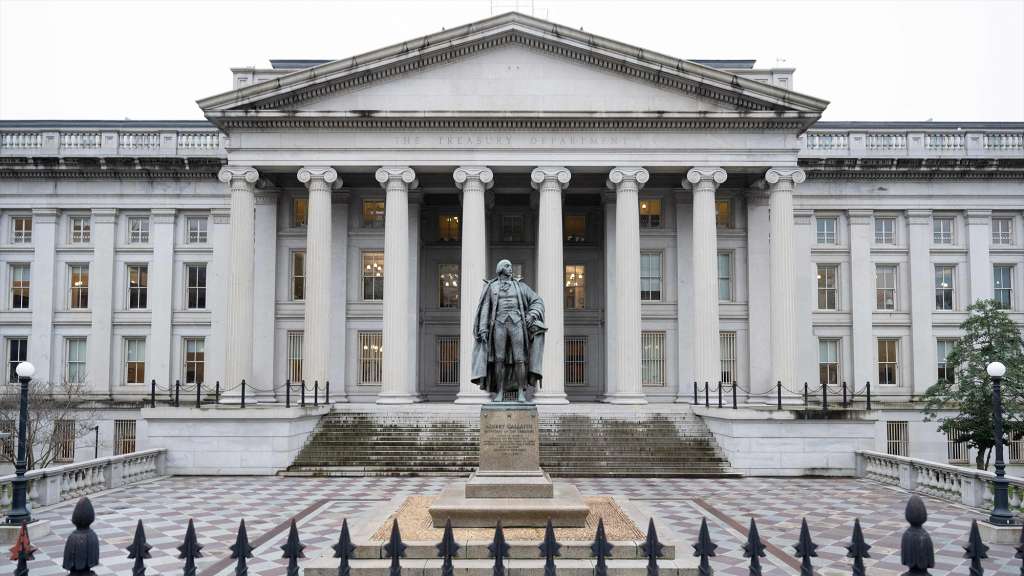(CNN) — The federal government will be unable to fully pay its obligations sometime between July and September if Congress doesn’t address the debt limit before then, the Congressional Budget Office said Wednesday.
That’s when the agency expects the Treasury Department will exhaust its ability to borrow additional funds using extraordinary measures.
However, the CBO stressed in its report that its projection is uncertain because the timing and amount of revenue collected and money spent could differ from its estimates. For instance, if income tax receipts in April come in lower than expected because of last year’s stock market downturn, the extraordinary measures may be exhausted sooner, and the government could run out of funds before July.
The CBO’s report is yet another warning to Congress that it needs to act soon to avoid a catastrophic default. But House Republicans and President Joe Biden have made little progress so far in resolving their differences on dealing with the budget cap.
The agency also released its 10-year budget and economic outlook, in which it projected major increases in federal budget deficits and debt over the next decade.
In addition, the CBO estimates that inflation-adjusted economic growth “comes to a halt” in 2023 because of the Federal Reserve’s interest rate hikes. It expects inflation to decline this year and the unemployment rate to rise through early 2024, reflecting the slowdown in economic growth.
Reaching the debt ceiling
The US hit the debt ceiling set by Congress on January 19, forcing the Treasury Department to start taking extraordinary measures to enable the federal government to keep paying its bills on time and in full. The actions are mainly behind-the-scenes accounting maneuvers.
In a letter to House Speaker Kevin McCarthy last month, Treasury Secretary Janet Yellen said that the measures would last through June 5, but that estimate is subject to “considerable uncertainty.”
House Republicans and the White House have not yet found much common ground to settle their standoff over the borrowing cap. GOP lawmakers are demanding spending cuts in exchange for raising the debt ceiling, while Biden is calling on Republicans to negotiate on reducing spending without holding the debt ceiling hostage.
Steep increase in the deficit
The CBO’s projection for the 2023 budget deficit is $1.4 trillion, about $400 billion more than it was last May. The shortfall will hit $2.7 trillion in 2033, the agency estimates.
The deficit amounts to 5.3% of gross domestic product this year and grows to 6.9% in 2033. This is “significantly larger” than 3.6% of GDP that deficits have averaged over the past five decades, the agency noted.
The CBO now projects the cumulative deficit over the next decade will be $3 trillion larger than it estimated last May. This is mainly because of new legislation and changes to the economic forecast that boost interest costs and spending on mandatory programs.
Meanwhile, federal debt held by the public is expected to balloon from 98% of GDP this year to 118% in 2033 — which would be the highest level ever recorded — as interest costs and mandatory spending outpace the growth of revenues and the economy. It’s expected to hit 195% of GDP by 2053.
The jump in mandatory spending will be driven by rising costs for Social Security and Medicare as the US population ages. Federal health care costs are also growing.
Net spending on interest will increase substantially, the CBO projects. It has already risen swiftly because of the Federal Reserve’s interest rate hikes last year.
“Over the long term, our projections suggest that changes in fiscal policy must be made to address the rising costs of interest and mitigate other adverse consequences of high and rising debt,” Phillip Swagel, the CBO’s director, said in a statement.
(Copyright (c) 2024 CNN. All Rights Reserved. This material may not be published, broadcast, rewritten, or redistributed.)

